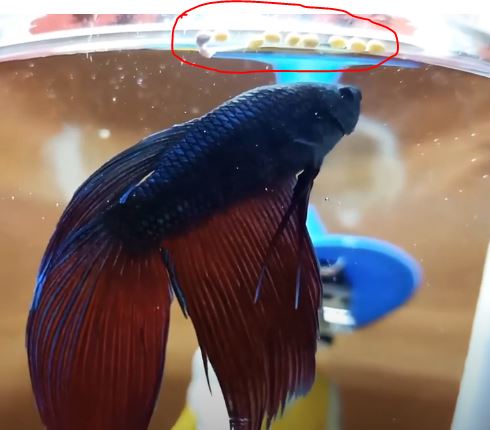
They’re usually written somewhere on the food packaging. When deciding which pellets to give your fish, it’s a good idea to look at the ingredients.

Most manufactures that produce specifically for bettas will create pellets that float – this will be specified on the pellet packaging. Some pellets instantly sink to the bottom of the aquarium as soon as they hit the water. Something else to take into account is your brand of fish food. The fish will either overfeed or the pellets will sink to the bottom, decompose and then cause excess waste.

When reaching the end of their life span, some bettas will start eating less as they lose their appetite, so don’t put too many pellets in the aquarium if they’re not going to eat them. Younger bettas will need less pellets, older bigger bettas more. Another variable to consider is the size and age of the betta. Aim for about 1.8 grams worth (for an adult betta) if you are unsure. This measurement can vary as manufactures produce differently-sized pellets, so take this measurement as a rule of thumb. Anything between 4 to 6 pellets a day is a good amount to feed a betta. In the wild, bettas sometimes eat small insects that land on the water, so naturally, pellets are more effective. Pellets also sit on the surface of the water, but they look more like insects. Bettas don’t tend to like flaked food because when it sits on the surface of the water it’s similar in appearance to debris. Move your betta onto live food as soon as possible - no transition phase is needed.Īs a beginner, it’s not a bad idea to feed bettas pellets, but most bettas tend to be fussy when it comes to flaked food. A betta can live purely on live foods but not purely on pellets. If it isn’t of that much inconvenience, consider substituting the pellets for live food on a daily basis. It’s very important to give your betta a varied diet in order to keep it happy. Bettas are very intelligent compared to other fish, so if you stick to a feeding time, chances are they’ll remember it. We recommend the twice-a-day feed as it’ll keep your betta that little bit more happy and stimulated. It’s a good practice to feed a betta one whole portion once a day, or two half portions twice a day.

Some bettas will happily consume more than 1.8 grams, and you do not need to strictly adhere to this number, but it’s a good amount (as a rule of thumb) to aim for in order to maintain the health of the fish. However, if you are unsure of the amount to feed your betta, you may like to weigh out 1.8 grams of your chosen food the first time you use it so that you get a rough approximation of what the portion size should be. A betta keeper is not expected to meticulously weigh out 1.8 grams of food everyday, especially when a betta is on a diet of different types of food. This applies regardless of the type of food you are feeding your betta. A good daily portion of food for an adult betta is about 1.8 grams, but it doesn’t have to be exact.


 0 kommentar(er)
0 kommentar(er)
